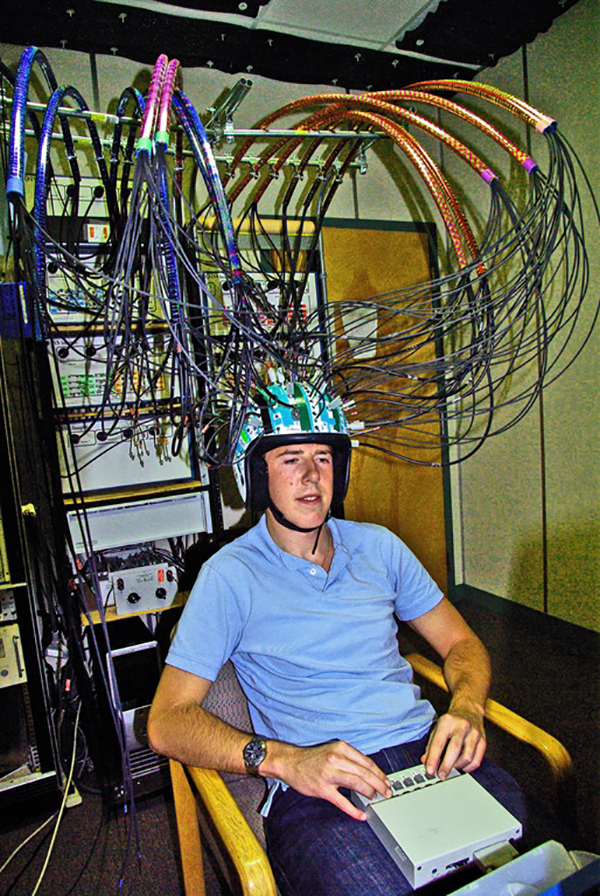
Neuroscientist Kyle Mathewson is pictured here wearing the new optical imaging equipment, called Imagent.
Using lasers and photodetectors, a new optical brain-imaging tool is providing a never-before-seen look inside your head. The non-invasive tool projects and measures infrared light as it is projected into the brain and the rate at which it exits, painting a picture of brain activity and blood flow at the same time-something that is impossible without this technology.
The optical brain-imaging tool, called the Imagent, comes to the University of Alberta as the result of new funding for neuroscientist Kyle Mathewson, from the John R. Evans Leaders Fund (JELF), a Canada Foundation for Innovation (CFI) initiative.
On August 15, Mathewson received funding to purchase this state-of-the-art optimal imaging tool, which allows researchers to accurately measure detailed brain activity in a non-invasive way. The equipment will be housed in a new Shared Cognitive Neuroscience lab in the Faculty of Science.
"This optical imaging system provides images of rapid changes in brain activity, solving many unanswered questions about how our brains function from moment to moment," explained Mathewson. "The system is genuinely cutting edge. Our lab at the University of Alberta will have one of only a few in the world and first of its kind in Canada."
Invaluable implications
An assistant professor in the Department of Psychology in the Faculty of Science at the University of Alberta and Neuroscience and Mental Health Institute affiliate, Mathewson studies how the brain focuses on and filters out different information. His research has implications from job training and professional development to creating smarter artificial intelligence.
"We want to measure a person's state of attention from moment to moment," said Mathewson. "For instance, we could pinpoint the moment when a driver stops paying attention to the road, or determine practices to help students learn better and more efficiently. This tool will allow us unprecedented views of the brain networks that give rise to these and other important behaviours."
The implications, Mathewson explained, are huge.
"This optical imaging system helps to put the UAlberta cognitive neuroscience program even more firmly on the map," said Mathewson. "Securing this tool widens the scope of potential research and is already attracting interest from students and scientists around the world."
At the grant announcement last week, the Honourable Kirsty Duncan, Minister of Science shared a similar sentiment.
"Our scientists need the best tools and equipment for ground-breaking research and discovery and we are committed to ensuring they have them. Their successes will lead to an improved economy and will fuel an active research community here in Canada and internationally."